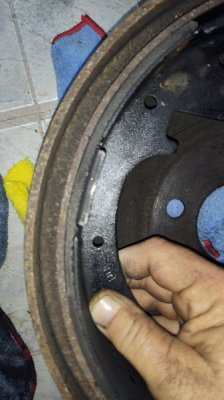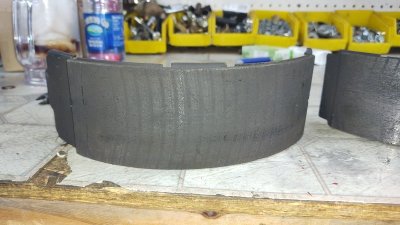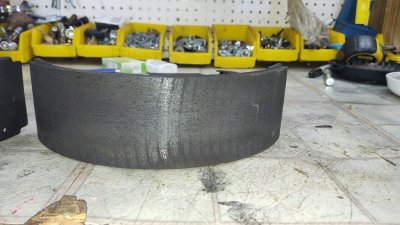Latest doings on this issue today (you know, since the damn website didn't work and all....):
Once I got the LF shoes disassembled and off the car, some rudimentary inspections followed -
starting with seeing if they were arched anywhere near the same as the drum:


I realize this isn't a scientific, measured method, but they sure looked close enough for me.
Next, I tried to check both shoes to see if the frames were actually plumb (90 degrees) from friction
part to backbone part - and according to my carpenters' square, they were pretty spot on there, too.
Finally, I went to town on the friction surfaces of both shoes with a rather aggressive, open-web sandpaper
and took off most of the checking/hazing/whatever that weird wear pattern was on them:


Finally, I selected the better looking of the two spare drums I have (they were both fresh machined when I
bought them a few years ago) and gave it a quick cleanup with Brakleen + light sanding to clear any rust.
It's all installed on the car and Fred is back on all fours after some rudimentary adjusting and testing with
my wife behind the wheel operating the brake pedal while I spun wheels and observed.
I also re-packed the bearings on the LF again (figured they'd gotten hot, so why not)...
I reckon another test drive is on the agenda tomorrow to see if I did any good.
If not? I'm pretty sure it'll turn out to be something in the fluid distribution components...



















